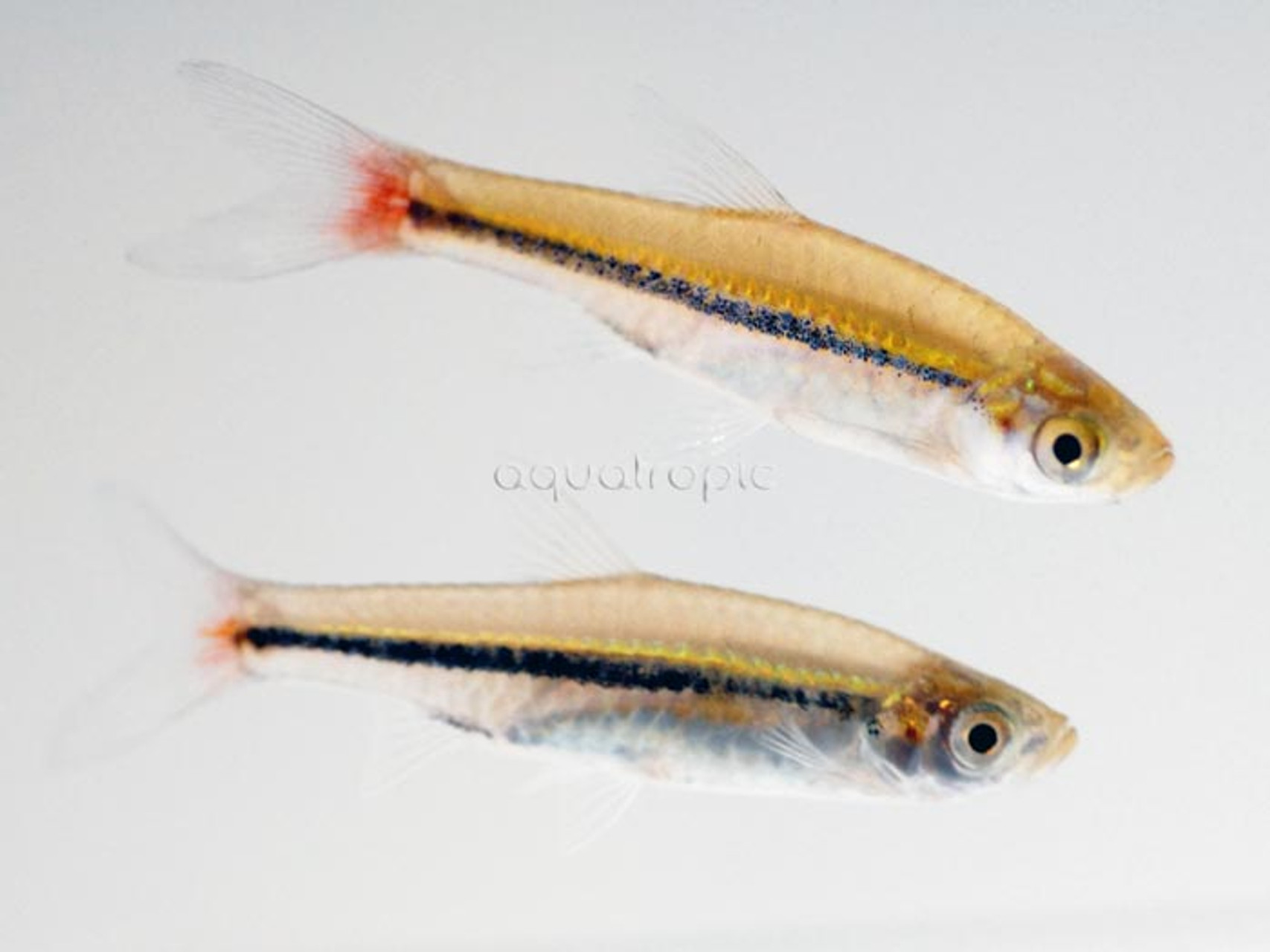The Brilliant Rasbora (Rasbora borapetensis)

The Brilliant Rasbora is a study in understated beauty. It’s shape is perfectly streamlined for quickly cutting through its watery home, while the black and gold lines running along the body add just enough panache to whet the appetite of any discerning aquarist. And, as if to gild the piscine lily, the tail fin is adorned with a delectable spot of bright red. In total, this fish is a masterpiece full of subtle splendors, rightfully earning its common name of Brilliant Rasbora.
In the wild, you’ll find this species throughout a wide swath of Southeast Asia, occupying drainages of the Mekong, Chao Phraya and Mae Klong Rivers. Many of these waterways are now heavily polluted, but this little fish has continued to thrive here. This heartiness is one of its most admirable features in an aquarium, as nearly any water condition will be found acceptable, though a planted aquarium with neutral or slightly acidic waters are recommended.
There is a bit of ambiguity regarding the common name of Rasbora borapetensis. Many aquarium sources continue to refer to this species as the Brilliant Rasbora, but this name is also commonly in use for a similar fish from this same part of the world, Rasbora einthovenii. An alternative name frequently seen (and used by the IUCN and fishbase) is “Red-tailed Rasbora” in reference to the distinctive and colorful marking present on the tail.
This small schooling species, which grows to just two inches in length, should always be kept in as large a group as possible to help reduce their natural skittishness. They are, after all, a bait fish (albeit, a very pretty one), so their primary means of defense is to blend in with the crowd and swim away as fast as possible. For this reason, they can make for a wonderfully active addition to an aquarium. Their peaceful disposition makes them suitable to mix with almost anything that won’t swallow them whole or be put off by their hustle and bustle. For a Southeast Asian style biotope, try mixing them alongside Danio, Trigonostigma, Crossocheilus, Trichogaster, Badis, or Betta.